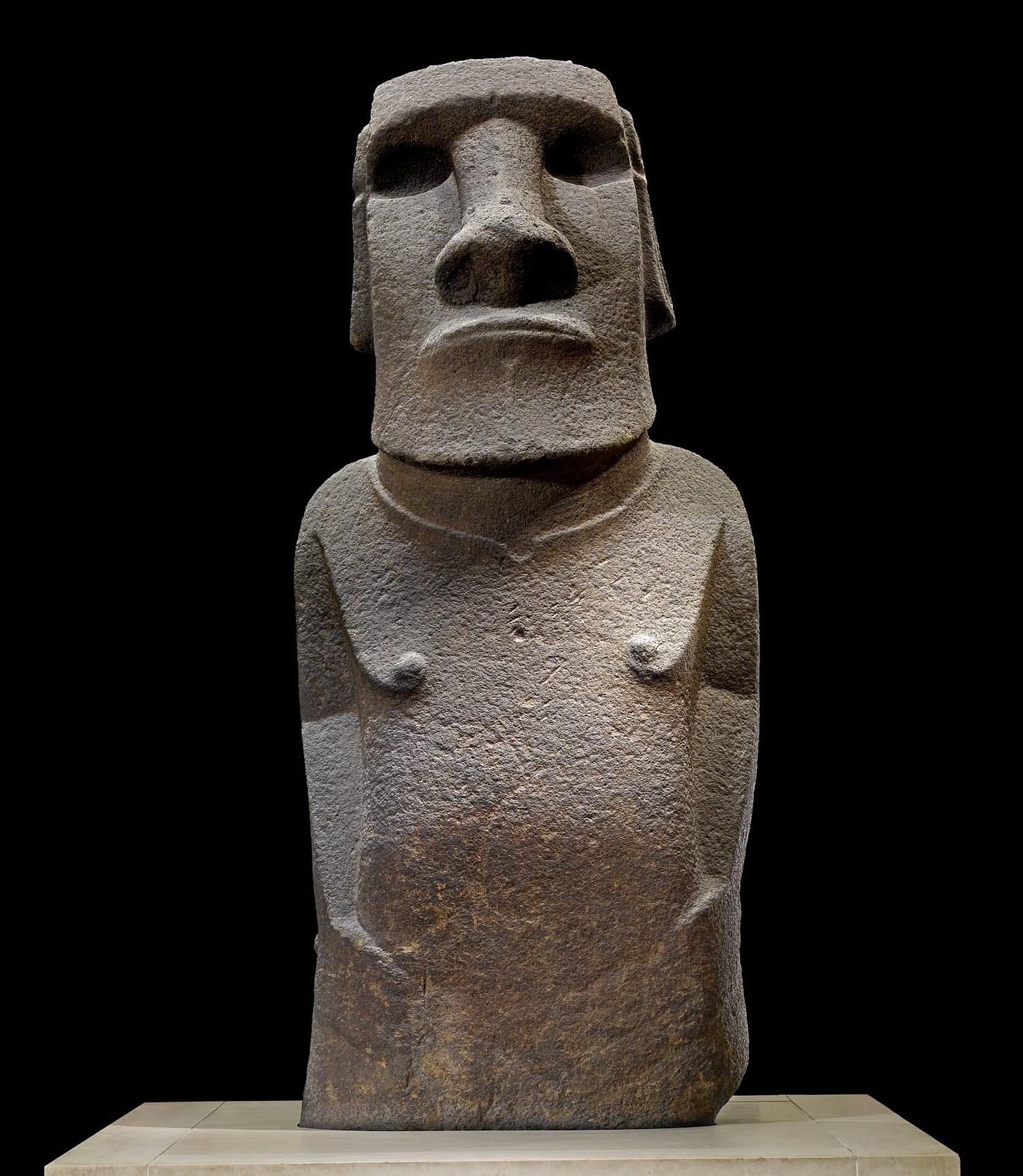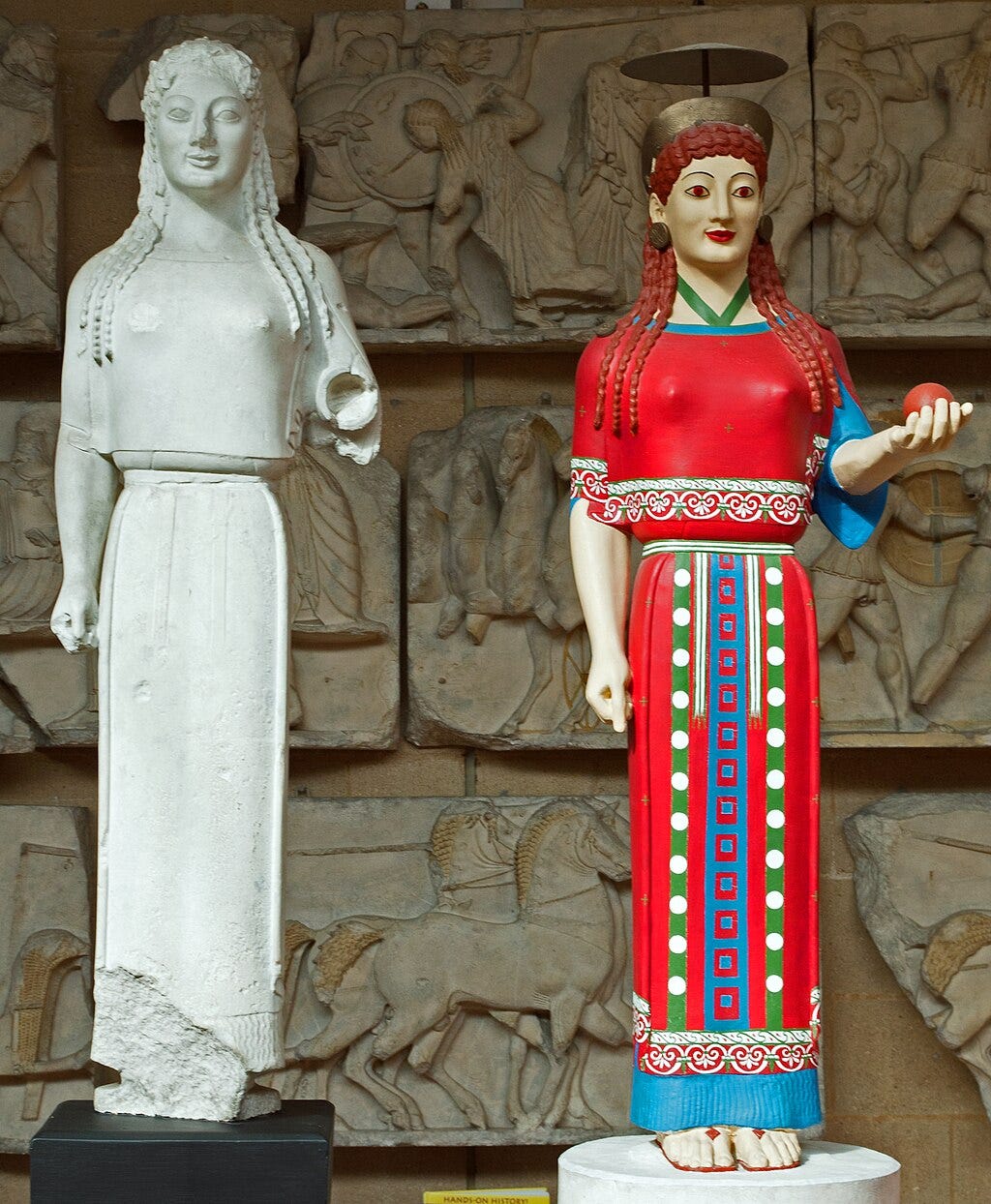Museums are doing it wrong
And how they can fix it. Part Two.
In Part One, I argued that “great” museums of history, archaeology, and anthropology are mostly failing at their primary goal: educating the public. My evidence was a list of personal anecdotes of wasted opportunities for learning. Here, I present some more angry anecdotes, then one example of a successful museum.
More times they did it wrong
If you visit the British Museum, you’ll likely walk past the Rosetta Stone. The Stone is one the of the more important artifacts in all of archaeology: it helped us decipher Egyptian hieroglyphics and thus unlock thousands of years of history. In the Museum, the Stone is in a case, by itself, prominently positioned at the intersection of two hallways, usually with a mill of people taking photos. The Stone has a little descriptive placard of about 200 words. And that is it. This piece could have an entire museum devoted to it, explaining how the decipherment happened and what it unlocked. (Indeed, there is such a museum in France.) Or, the many other hieroglyphs in the Museum could be linked to this piece. Or, the piece could have been contextualized: how did it end up in the Museum at all? But no. It just sits there, getting photographed.
Back in Berlin, I’m in the Altes Museum. I wander by a small, out-of-the-way case. In skimming the placards, my eye is caught by this sentence: “The Duenos vessel features the oldest Latin inscription.” I’m a big archaeology nerd, so I had a vague memory of the Duenos vessel, which led me into a stunned half-belief. I needed Wikipedia to confirm what this placard failed to communicate: the weird 3-inch piece of pottery in one corner of this display is the oldest Latin inscription, not in this case, not even in this museum, but in the entire world. And they have it just, you know, next to some other thing with writing on it that is so unimportant that it gets this description: “Plate with Inscription: Titeles. Caere (Italy), acquired in 1872. Clay, 500-480 BC.” What else would you want to know about either piece?
I’ll pause the anecdotes for a moment to observe that I can enjoy myself in museums like the British Museum and Altes Museum because I studied archaeology and I’ve learned about many of the pieces. It’s not a complete disaster to have me approach the contextless Rosetta Stone because I know what it is, know part of what it says, and have even learned how to read parts of it. I get the pleasure of seeing the real thing, appreciating its true size, shape, color, and detail, while also basking in its aura. But I’m really not sure how normal museumgoers are supposed to get any of that.
Still in Berlin, outside the Bode Museum, there are some flags advertising that the Museum is a “healing museum.” I’m honestly curious. Education is priority one, but there’s no reason a museum couldn’t also do some healing, or that healing might be a way to get people in the door to do education. After going through the whole museum, I conclude that the way in which the museum is a “healing museum” is that there is one smallish, moderately tucked away room with signs at either entrance announcing that, because the Bode is a healing museum, you are welcome to meditate in this room. There are a half dozen pillows, and that’s it. Two people are sitting and apparently meditating, which I find astonishing because I am so irritated by how patronizing this “healing” thing is. I’ve been to Denny’s franchises that have put more effort into “healing.”
I once had the privilege of attending a private event at the Smithsonian National Museum of Natural History in Washington, DC. I end up in the little room with the gems. I scrutinize some placards, trying to get oriented and make sense of what I’m seeing. Rather than doing my normal struggling and Googling, this time there is a museum employee, so I turn and ask: “OK, before anything else, can you just tell me what a gem is?” It turns out this person is the (junior) curator of this very gem collection, and therefore she knows everything about gems. After asking all my questions, I give my honest feedback, that the room is pretty but confusing and not very educational in its current state. She sighs and nods knowingly, and I infer she is waiting for the current (senior) curator to retire, so that changes can be made.
I’m in a national park in the American West. (I can’t remember where.) There is a giant hole in the ground, like someone took an ice cream scoop a mile across and just scooped out solid stone. What on earth happened here? I consult the placard. I can’t remember what it said, only that my travel partner and I, both PhDs, couldn’t make sense of (1) the geological terminology, (2) how the colored diagrams on the placard corresponded to that terminology, or (3) how either the diagrams or the terms corresponded to the giant hole in the ground. I consider that placard actively harmful, since its main message seems to be that I’m too dumb to understand geology.
I have a non-specific contempt for exhibitions in ethnographic museums that try to make their collections relatable by (1) abstracting away everything specific and relatable about their content and then (2) asking you to relate to the generalized categories. “Hello, museum visitor! Do you have a job and sometimes get sick? Then you’re probably also interested in the intersection of labor and illness in pre-contact Mesoamerica, right? They’re just like you! Doesn’t that make these photographs and random objects so interesting and relatable?”

A museum that does it right
One of my favorite museums in the world is the Museum of Classical Archaeology in Cambridge, UK. At a glance, this might be surprising. It is a small museum: the British Museum gets 400x more visitors per year). It also has no notable authentic pieces: almost everything is a copy, such as plaster casts of marble sculptures.
I love this museum because it does not “wow,” it educates. My memory is that the museum visit follows a single main circuit of ancient sculpture, arranged in historical and aesthetic order. You start with very old, stiff-looking kouroi and advance through changing patterns in ancient Greek sculpture. When you arrive at the famous Aphrodite of Knidos, you understand the (very possible true) stories about how men were so bewitched by the statue’s beauty that they broke into the temple at night and tried to copulate with it. You remember the name of its sculptor, Praxiteles, because his name is helpfully repeated and contextualized across multiple pieces, tracing his artistic innovations in subject matter and posture as they ramified through ancient Greece.

You continue on through the Romans, seeing the influence of the Greeks and the innovation on top of it, pausing at the Augustus of Prima Porta and then proceeding to learn how to roughly date busts of Roman emperors using their period-specific hairstyles, clothes, and facial representations. In an hour I learnt more than I have in years of going to museums since then.
I think this museum is successful in part because it is emphatically about education. You are supposed to walk in and learn about classical archaeology before you walk out. It does not have original pieces to negotiate with, and it is not trying to be hip or groundbreaking.
Of course, not every museum can be like this, with its rather arcane and fairly narrow subject matter. Not everyone wants this kind of dry education, even in a museum. And the “great” museums have the great pieces that present high risk and high reward in their display. But great museums must start from this educational nucleus and carry the challenge of their great pieces to educational triumph.
In the Part Three of this series, I’ll propose directions for museums, to make things better.



This has got me thinking if something that’s missing is a more customizable museum experience. Museums have been trying and failing to integrate smartphones and apps for like a decade. Most are still shockingly bad. But a way to customize a more "casual", a more "educational", or a more "professional" experience could be helpful.
Another enjoyable post. I feel like specific exhibitions at the “great museums” can be like this. I went to Siena at the National Gallery in London and it was organised chronologically, and even as someone relatively naive, I could see the progression and the innovation that had happened there.